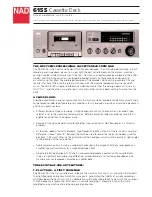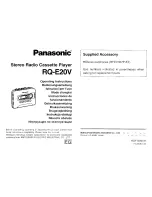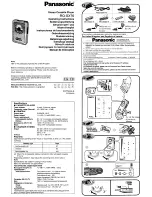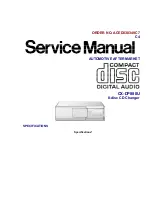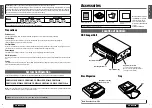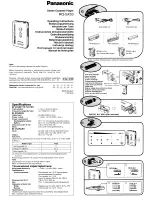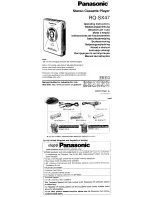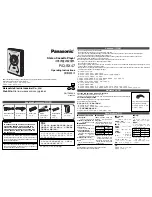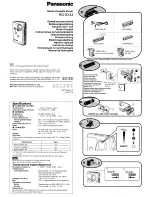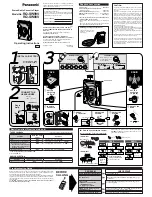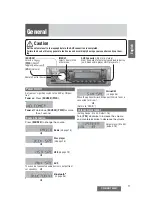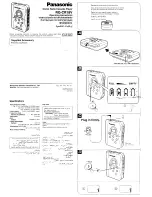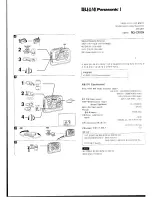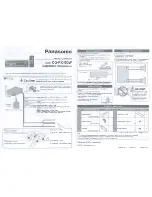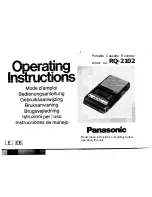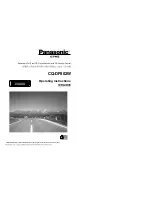
19
CLOSED CAPTIONS
WHAT IS CLOSED CAPTIONING?
This unit has the capability to decode and display Closed
Captioned television programs. Closed Captioning will
display text on the screen for hearing-impaired viewers or it
will translate and display text in another language.
CLOSED CAPTIONING WITH A VCR
Closed Captioned programs can be recorded and played
back on a VCR with the Closed Captioned text intact. The
Closed Captioned text will disappear during Cue (Fast
Forward Search), Review (Rewind Search) and Pause
modes or if the VCR tracking is not adjusted properly.
TO VIEW CLOSED CAPTIONS
ANALOG CAPTIONS
Please see the next page for setting the Analog Caption.
CC1:
This Closed Caption mode will display text on the
screen in English or another language. Generally, Closed
Captions in English are transmitted on Captions 1.
CC2-4
These Closed Caption modes will display text on the
screen in English or another language. Generally, Closed
Captions in another language is transmitted on
these channels.
TEXT:
The Text Closed Caption Modes will usually fill the
screen with a programming schedule or other information.
Select T1, T2, T3 or T4.
DIGITAL CAPTIONS
Please see the next page for setting the Digital Caption.
SERVICE 1-6 :
These Closed Caption modes will display text
on the screen in English or another language. Generally,
Closed Captions in English are transmitted on Service 1 and
Closed Captions in other languages are transmitted on
Service 2 through 6.
After selecting a Closed Caption Mode, it will stay in effect
until it is changed, even if the channel is changed. If the
Captions signal is lost due to a commercial or a break in the
signal, the Captions will reappear when the signal is received
again. If the channels are changed, the Captions will be
delayed approximately 10 seconds.
The Captions will appear in places on the screen where they
will least interfere with the picture, usually on the bottom of
the screen. News programs will usually show three-line
Closed Captions which scroll onto the screen. Most other
shows provide two or three lined Captions placed near the
character who is speaking so the viewer can follow
the dialogue.
Words in italics or underlined describe titles, words in foreign
languages or words requiring emphasis. Words that are sung
usually appear enclosed by musical notes.
For television programs broadcasting with Closed Captions,
look in your TV guide for the Closed Captions symbol (CC).
NOTES:
• When selecting Closed Captions, the captioning will be delayed approximately 10 seconds.
• Misspellings or unusual characters may occasionally appear during Closed Captioning. This is normal with Closed
Captioning, especially with live programs. This is because during live programs, captions are also entered live. These
transmissions do not allow time for editing.
• When Captions are being displayed, on-screen displays, such as Mute, may not be seen or may interfere with
Closed Captions.
• Some cable systems and copy protection systems may interfere with the Closed Captioned signal.
• If using an indoor antenna or if TV reception is very poor, the Closed Caption Decoder may not appear or may appear with
strange characters or misspelled words. In this case, adjust the antenna for better reception or use an outdoor antenna.
FAQs:
When I press the MUTE button, the captions do not appear, is this normal?
Yes, this is normal for this unit. Once the display information disappears, the captions will continue.
I entered the Captions mode, but no captions are appearing, why?
If no caption signal is received, no captions will appear, but the television will remain in the Caption mode.
Why is there a big black box on the screen?
Because you are in a Captions mode. Turn the captions off, or select a different Captions mode.
All manuals and user guides at all-guides.com































